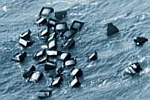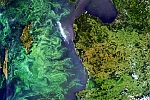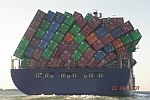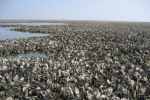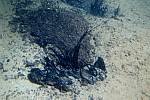Discussion Topic: What is Marine Pollution?
Subjects:
Geography, Environmental Science, Biology, Social / Political Studies, Language ArtsObjectives:
Practise your analytical skills and learn about the different aspects of marine pollution.
Prerequisite:
none
Material:
- newspaper or magazine articles, information from the internet and/or the library (optional)
Time needed:
- 1 - 2 school lessons for the discussion
- optional: a few hours to prepare the discussion by collecting and reading information about marine pollution
Procedure:
Get together in groups of no more than 5 students. Develop a definition for marine pollution by discussing the six scenarios below.
| 1.) A cargo ship hits an iceberg in the southern Atlantic and loses its freight of television sets. | 2.) Agricultural fertilisers have been applied to wheat fields in Poland. Following strong rainfall events they are washed into the Baltic Sea. An algal bloom results. | ||
| 3.) A tourist group on a cruise in the Mediterranean throws their empty soda tins overboard. | 4.) Two container ships in the Taiwan Strait collide. One of them spills a load of sesame oil. | ||
| 5.) The Pacific Oyster from Asia is brought to the Netherlands for cultivation in the North Sea. Its larvae escape and the oyster spreads all over the North Sea coast and settles on blue mussel beds. | 6.) Due to faults in the Earth's crust off the coast of California, natural oil seeps release more than 100,000 tons of oil each year into the Pacific. |
You may find that some of the substances listed are quite obviously pollutants. Still - think about your definition carefully: exactly how does a substance or species turn into a marine pollutant?
Would your definition be different if you were one of the people below?
| A) A kite surfer spending your holidays in Pucka Bay, Poland | B) A resident of Barcelona, Spain | C) A hotel owner in Antalya, Turkey | D) An environmental activist with a special focus on penguins in Antarctica | E) A member of the city council of Kaohsiung, a city on the western coast of Taiwan | F) A fisherman from the island of Sylt | G) A coast guard from Santa Barbara, California |
